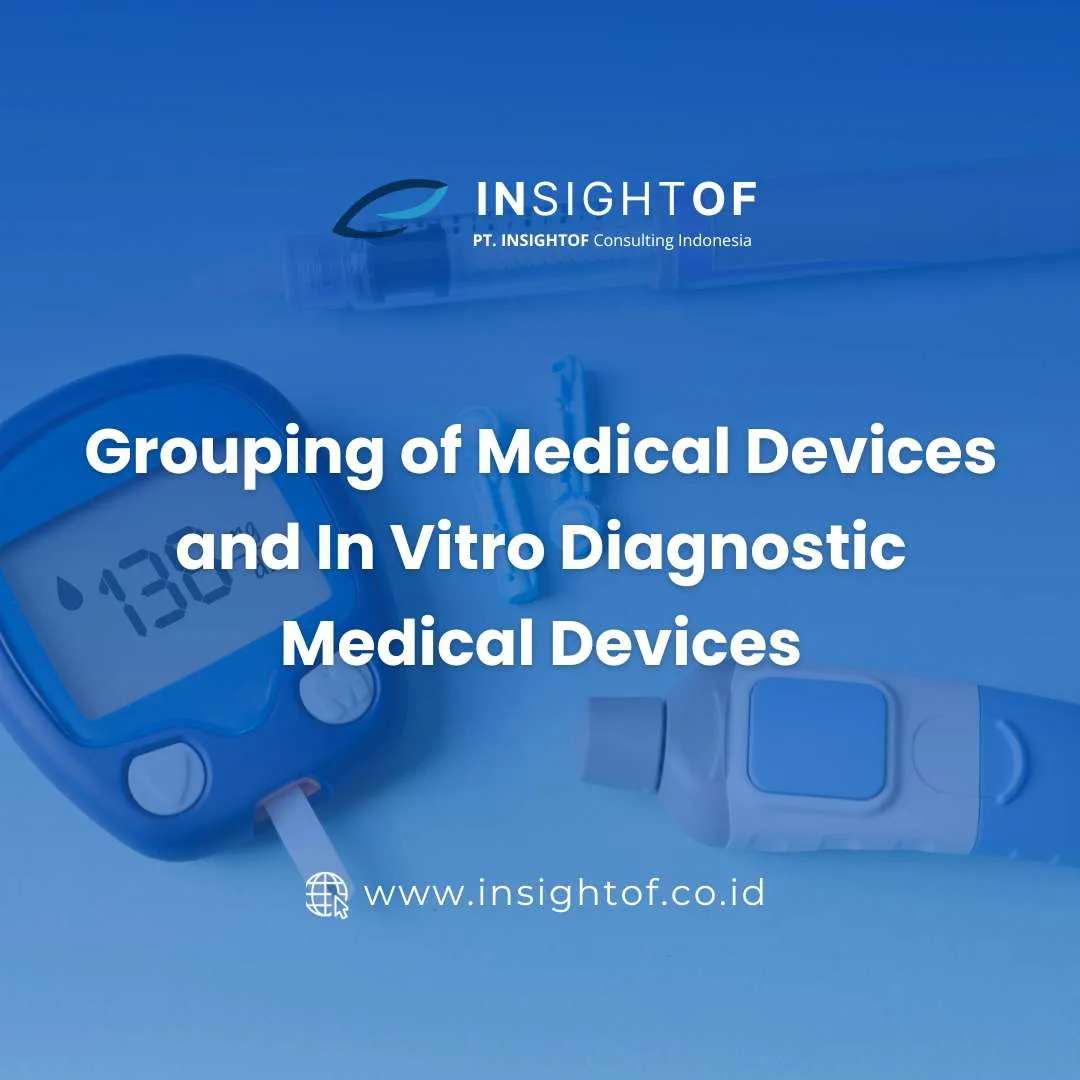Medical devices can be grouped and then registered in one application for distribution permit regThe registration requirements for grouped medical devices must comply with Regulation of the Minister of Health Number 62 of 2017. This regulation addresses distribution permits for medical devices, in vitro diagnostic medical devices, and household health supplies. Each medical device and in vitro diagnostic medical device (DIV) must meet specific administrative and technical criteria based on laws and regulations.
General Principles of Grouping
- Same Purpose of Use: Medical devices should serve the same intended purpose.
- Combination Use: Devices must be used together to achieve a common goal.
- Product Similarity: Products should be similar to simplify market authorization.
Categories of Grouping
1. Single Devices
A single device consists of one entity, sold in individual packages or various sizes.
- Examples:
- A product owner must register software as a single medical device if used with several CT scans from different manufacturers.
- Reagents compatible with instruments from various manufacturers must also be registered as single in vitro diagnostic medical devices.
2. Systems
A system includes multiple medical devices and/or accessories under these conditions:
- All devices come from the same product owner.
- They are used together for a specific purpose.
- Devices must be compatible when used as a system.
- Registration occurs under a single system name. Labels and instructions for use must indicate joint usage (not used separately in one procedure).
- Example:
A patient monitoring system from Product Owner A is designed for use with vital signs sensors from Product Owner B. Together, they achieve a specified purpose and can be grouped in one registration application.
3. Families
Family grouping involves devices that meet these conditions:
- Originates from the same manufacturer.
- Shares the same trade name and product type.
- Falls under the same risk class.
- Has the same purpose of use.
- Maintains a similar design and manufacturing process.
- Offers variations within an allowable range.
4. DIV Test Kits
Grouping of in vitro diagnostic medical devices as DIV Test Kits includes reagents and/or devices that meet these provisions:
- All components come from the same product owner.
- Components are intended for combined use to achieve a specific purpose.
- They are sold under a single Test Kit name and labeled appropriately.
- Each reagent or device must indicate joint usage as an IVD Test Kit.
- All components should be compatible when used as an IVD Test Kit and packaged together.
- Example:
The HIV Enzyme Linked Immuno Sorbent Assay (ELISA) Test Kit may consist of controls, calibrators, washing buffers, and other supporting devices that work together to detect HIV.
5. DIV Systems
Grouping of DIV medical devices as a system comprises several DIV medical devices and/or accessories under these provisions:
- All components originate from the same product owner.
- They are intended for combined use to achieve a shared purpose.
- Each device is compatible when used as a system.
- Registration occurs under a single system name or labeling, indicating that components are intended for joint use.
- Example:
A glucose monitoring system includes a glucose meter, test strips, control solutions, and other devices that can be grouped and registered in one market authorization application.
6. Groups
A group consists of two or more medical devices labeled and packaged together by the product owner. The grouping must adhere to these provisions:
- The group must have a shared trade name.
- All devices should be labeled and packaged together by the manufacturer.
- Each device must serve the same purpose of use.
- Example:
A First Aid Group may contain plasters, gauze (rolls and sheets), scissors, tweezers, and alcohol swabs. Each product must secure a distribution permit before being combined in the First Aid Group.








